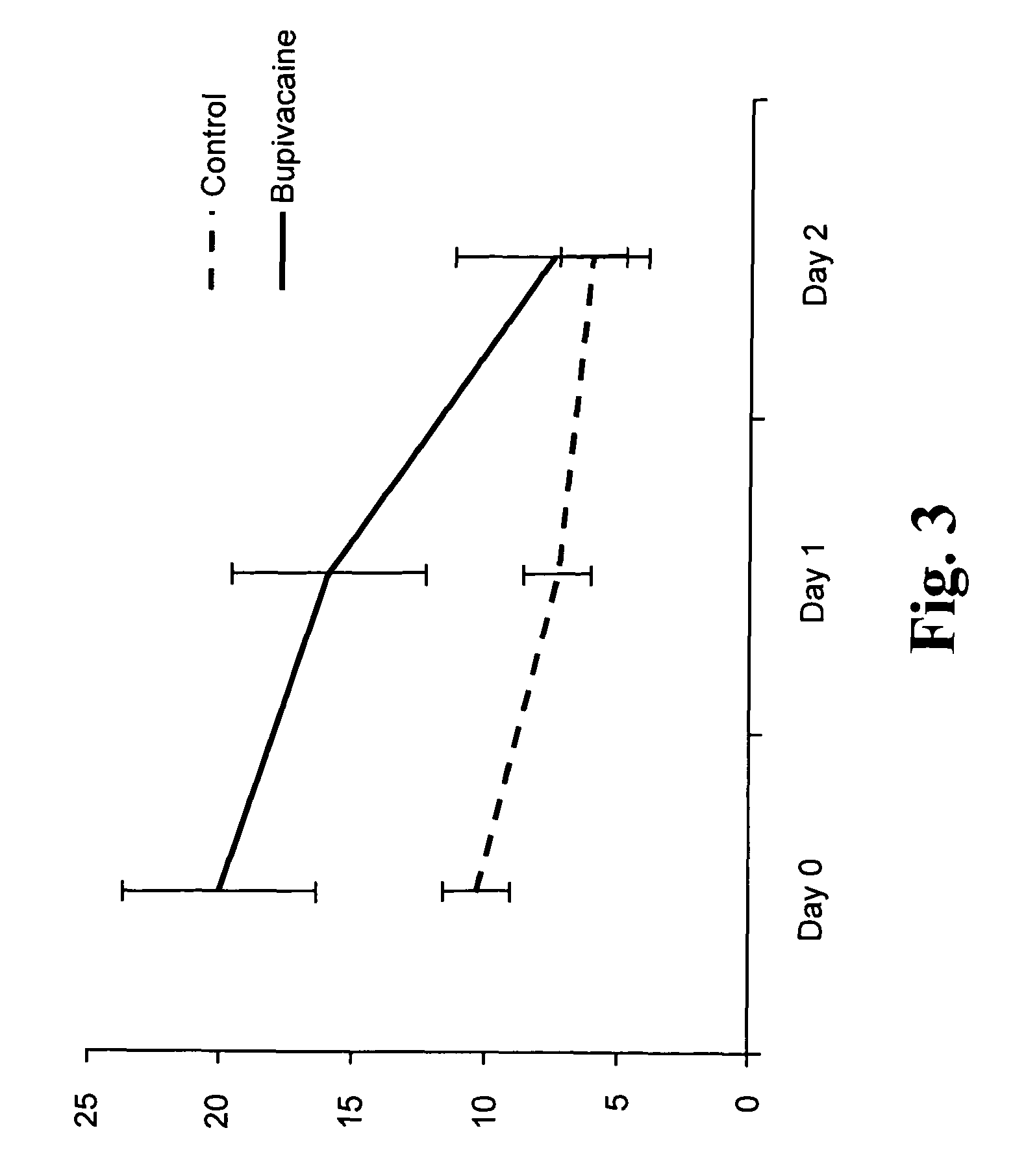Slow release of organic salts of local anesthetics for pain relief
a local anesthetic and organic salt technology, applied in the field of pain treatment, can solve the problems of insufficient distribution of local anesthetic salts throughout the wound, cumbersome local anesthetic pumps and catheters, and limited use of local anesthetics, so as to prolong the release of local anesthetic, minimize toxic effects, and enhance the effect of anesthetic performan
- Summary
- Abstract
- Description
- Claims
- Application Information
AI Technical Summary
Benefits of technology
Problems solved by technology
Method used
Image
Examples
Embodiment Construction
[0035]In accordance with the subject invention anesthetic particles are provided for the treatment of pain causing injury, particularly wounds, where the particles comprise as their major ingredient an organic acid salt of an amino acid amide or ester local anesthetic. Examples of the amino acid amide and ester local anesthetics have been indicated above, where of particular interest are lidocaine, bupivacaine and ropivacaine. The organic acid salt will form an ionic species that is substantially neutral and hydrophobic, while the individual components are charged and capable of solvation and being separated at physiological pH.
[0036]The organic acid salts include pharmacologically acceptable acids that for the most part will be carboxylic acids, particularly aliphatic and sulphonic acids, where the organic acid is of at least about 6, usually at least about 8, carbon atoms, and the like. The aliphatic carboxylic acids that form the salts of particular interest will usually be from ...
PUM
| Property | Measurement | Unit |
|---|---|---|
| size | aaaaa | aaaaa |
| median size | aaaaa | aaaaa |
| size | aaaaa | aaaaa |
Abstract
Description
Claims
Application Information
 Login to View More
Login to View More - R&D
- Intellectual Property
- Life Sciences
- Materials
- Tech Scout
- Unparalleled Data Quality
- Higher Quality Content
- 60% Fewer Hallucinations
Browse by: Latest US Patents, China's latest patents, Technical Efficacy Thesaurus, Application Domain, Technology Topic, Popular Technical Reports.
© 2025 PatSnap. All rights reserved.Legal|Privacy policy|Modern Slavery Act Transparency Statement|Sitemap|About US| Contact US: help@patsnap.com



